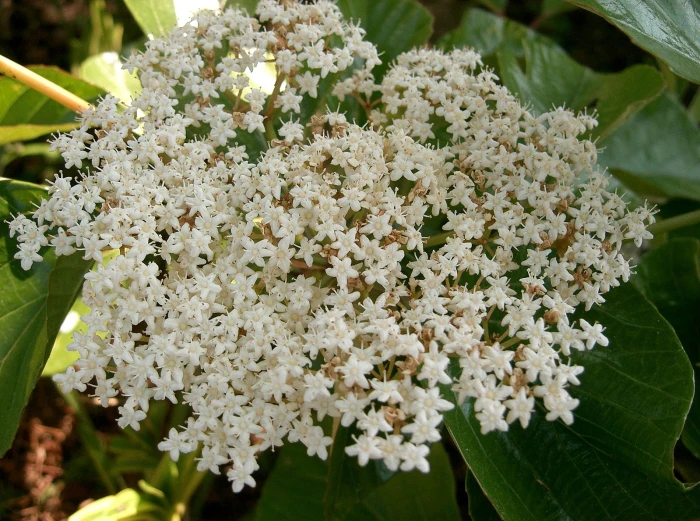Japanese Viburnum
(Viburnum japonicum)
Japanese Viburnum (Viburnum japonicum)
/
/

KENPEI
CC BY-SA 3.0
Image By:
KENPEI
Recorded By:
Copyright:
CC BY-SA 3.0
Copyright Notice:
Photo by: KENPEI | License Type: CC BY-SA 3.0 | License URL: http://creativecommons.org/publicdomain/zero/1.0/deed.en | Uploader: KENPEI | Publisher: Wikimedia Commons |



























Estimated Native Range
Climate Requirements for Fort Worth, Texas
| This Plant | Your Site | Plant Suitability for Your Location | ||
|---|---|---|---|---|
| • Precipitation | 8" - 132" | 33" | Your precipitation may be insufficient for this plant. Irrigate N" / year. | Irrigate N" / year |
| • High Temp. | 69°F - 107°F | 97°F | Your summer temperatures are normal for this plant. | Excellent |
| • Low Temp. | 20°F - 61°F | 33°F | Your winter temperatures are normal for this plant | Excellent |
This plant should grow well at your location with about N inches per year (Y minutes per month) of irrigation.
Summary
Viburnum japonicum, commonly known as Japanese Viburnum, is an evergreen shrub native to the woodland margins, shrublands, and open forest areas of Japan. It typically grows to a height and width of 6-8 feet (1.8-2.4 meters), presenting a dense, rounded form. The leaves are glossy, dark green, and leathery, adding year-round interest. In spring and early summer, it produces showy clusters of white flowers that are followed by red berries that mature to black, providing seasonal interest and attracting wildlife.
Japanese Viburnum is valued for its attractive foliage, fragrant flowers, and ornamental berries. It is suitable for use in residential landscapes, as a hedge or screen, and in mass plantings. This shrub is relatively low-maintenance, requiring only occasional pruning to maintain its shape. It prefers well-drained soil and tolerates a range of conditions from full sun to part shade. While generally pest-resistant, it can be susceptible to viburnum leaf beetle and should be monitored for infestations.CC BY-SA 4.0
Japanese Viburnum is valued for its attractive foliage, fragrant flowers, and ornamental berries. It is suitable for use in residential landscapes, as a hedge or screen, and in mass plantings. This shrub is relatively low-maintenance, requiring only occasional pruning to maintain its shape. It prefers well-drained soil and tolerates a range of conditions from full sun to part shade. While generally pest-resistant, it can be susceptible to viburnum leaf beetle and should be monitored for infestations.CC BY-SA 4.0
Plant Description
- Plant Type: Shrub
- Height: 6-8 feet
- Width: 6-8 feet
- Growth Rate: Slow
- Flower Color: White
- Flowering Season: Spring, Summer
- Leaf Retention: Evergreen
Growth Requirements
- Sun: Full Sun, Part Shade
- Water: Medium
- Drainage: Medium
Common Uses
Bee Garden, Bird Garden, Butterfly Garden, Deer Resistant, Edible*Disclaimer: Easyscape's listed plant edibility is for informational use. Always verify the safety and proper identification of any plant before consumption., Fragrant, Hedges, Hummingbird Garden, Low Maintenance, Rabbit Resistant
Natural Habitat
Woodland margins, shrublands, and open forest areas of Japan
Other Names
Common Names: 日本莢蒾
Scientific Names: Viburnum japonicum, Viburnum japonicum var. fruticosum, Viburnum fusiforme, Cornus japonicum
GBIF Accepted Name: Viburnum japonicum (Thunb.) Spreng.